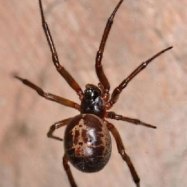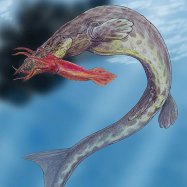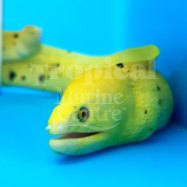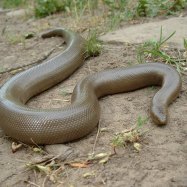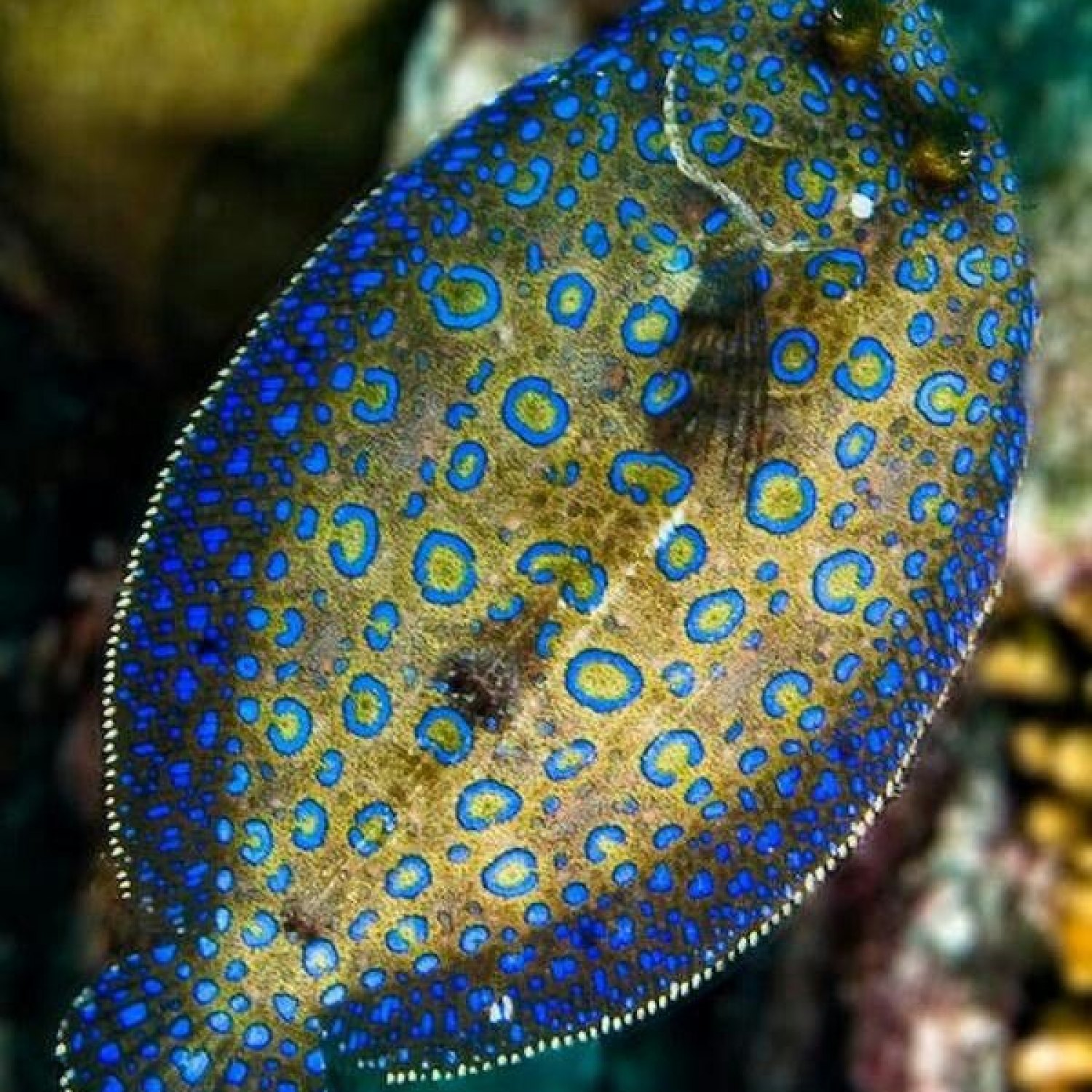
Flounder
Varies depending on species
Flounder is a unique type of fish with a distinct flattened body shape and is commonly found in coastal areas around the world. With varying lengths depending on the species, the flounder is part of the Paralichthyidae family and is known for its excellent camouflaging abilities. Keep your eyes peeled next time you're at the beach, you never know when you might spot a flounder blending into its surroundings! #Animals #Flounder #CoastalCreatures
Animal Details Summary:
Common Name: Flounder
Kingdom: Animalia
Habitat: Marine
The Amazing World of Flounders: A Unique Look at the Flatfish Family
The deep blue sea is home to a vast array of creatures, each with its own unique features and adaptations. One such creature that has captured the hearts of many is the flounder, a truly fascinating flatfish species that can be found in oceans all around the world.With its unique body shape, skilled camouflage abilities, and impressive feeding methods, the flounder is a creature that has intrigued scientists and ocean enthusiasts for centuries. In this article, we take a closer look at this fascinating fish, its characteristics, and its amazing place in the marine ecosystem Flounder.
The Science behind the Flounder
Scientifically known as Paralichthyidae, the flounder belongs to the animal kingdom, specifically to the chordata phylum. They are part of the actinopterygii class, which includes more than 30,000 fish species, and are categorized under the order Pleuronectiformes along with other types of flatfish. Within this order, there are more than 700 different species of flatfish, making it a diverse and interesting group.Flounders are part of the Paralichthyidae family, which consists of 14 known genera and more than 100 species. These fish are known for their flat, asymmetrically shaped bodies, which make them a unique sight in the ocean.
The Global Range and Habitat of Flounders
Flounders are found in different parts of the world, making them a truly global fish species. They can be found in all major oceans, including the Atlantic, Pacific, and Indian oceans, as well as in some smaller bodies of water such as the Mediterranean Sea and the Black Sea.Their specific ranges are dependent on the different species, and their habitats can vary greatly. Most flounders are found in marine environments, inhabiting shallow coastal areas, estuaries, and even deep offshore waters French Lop. Some species are also found in brackish or freshwater habitats, giving them a diverse range of environments to thrive in.
The Varied Appearance of Flounders
One of the most unique and intriguing aspects of flounders is their appearance. These fish have a distinct body shape, which allows them to blend seamlessly into their surroundings and fool their prey. While most fish have a horizontal body orientation, flounders are laterally compressed, meaning their bodies are flattened from side to side.This unique shape allows them to lie flat on the ocean floor, blending in with the sand or rocks, and waiting for their next meal to approach. In addition to their shape, flounders also have the skill of color change. They can alter their skin pigment to match their surroundings, making them practically invisible to predators or unsuspecting prey.
The color and markings of flounders can vary greatly depending on the species. Some may have a speckled pattern, while others may have stripes or plain, solid coloring. This variation adds to the already interesting and distinct appearance of these flatfish.
The Feeding Habits of Flounders
Flounders are a carnivorous species, meaning they primarily feed on other fish, crustaceans, and other small marine creatures. However, their feeding habits are quite unique and impressive. Due to their flattened body and camouflage abilities, flounders have to approach their prey from an unexpected angle. They will wait, hidden on the ocean floor, for unsuspecting prey to swim above them, and then quickly dart upwards to catch their meal.One interesting feeding behavior of flounders is known as ambush predation. These fish will remain completely still, with only their eyes and mouth visible, until their prey gets close. Then, in a lightning-fast movement, they will attack and swallow their prey whole.
Another fascinating feeding behavior of flounders is known as sucking feeding. Some species have a highly adapted mouth that allows them to suck prey directly from the ocean floor. This behavior has been observed in sand-dwelling and deep-sea species, making them well-adapted to their respective habitats.
The Importance of Flounders in the Marine Ecosystem
As with any species, flounders play an important role in maintaining balance in their ecosystem. These flatfish are not only a food source for larger predators, but they also help control populations of smaller marine creatures. By preying on smaller fish and crustaceans, flounders help regulate their numbers, which in turn has a positive effect on the overall health of the marine ecosystem.Flounders are also an important part of the fishing industry, both for recreational and commercial purposes. They are a popular catch for recreational fishermen, and their unique taste and texture make them a sought-after fish in the seafood market.
Flounders in Captivity
While flounders primarily live in the ocean, some species have been successfully kept in captivity in aquariums. Due to their unique appearance, flounders can make an interesting addition to any aquarium display. However, these fish require specific care and conditions to thrive in captivity. They need plenty of space to swim and hide, as well as a varied diet to stay healthy.In recent years, there has been a surge in the farming of specific species of flounders for commercial purposes. These fish are bred and raised in captivity, primarily for their use in the food industry. This sustainable farming method helps reduce the pressure on wild flounder populations and provides a reliable source of income for fish farmers.
The Threats Facing Flounders
As with many other marine creatures, flounders face several threats due to human activities and environmental changes. One of the biggest threats is overfishing, as the demand for flounders in the seafood market continues to increase. This has led to a decline in wild populations and even the collapse of some species, such as the European flounder.Pollution and habitat destruction are also significant threats to flounders. These fish rely on healthy, clean marine environments to survive, and any disruptions or damage to their habitats can have a significant impact on their populations. Climate change, overfishing, and pollution are all factors that contribute to the decline of flounders in the wild.
In Conclusion
Flounders are a truly unique and fascinating fish species that have captured the attention of scientists and ocean enthusiasts around the world. Their distinct appearance, impressive feeding methods, and important role in the marine ecosystem make them an integral part of the ocean's biodiversity.While these fish face threats to their survival, proper management and conservation efforts can help ensure their survival for generations to come. As we continue to learn more about these flatfish and their important place in our oceans, let us also strive to protect and preserve their natural habitats for the benefit of all.

Flounder
Animal Details Flounder - Scientific Name: Paralichthyidae
- Category: Animals F
- Scientific Name: Paralichthyidae
- Common Name: Flounder
- Kingdom: Animalia
- Phylum: Chordata
- Class: Actinopterygii
- Order: Pleuronectiformes
- Family: Paralichthyidae
- Habitat: Marine
- Feeding Method: Carnivorous
- Geographical Distribution: Worldwide
- Country of Origin: Varies depending on species
- Location: Coastal areas
- Animal Coloration: Varies depending on species
- Body Shape: Laterally compressed
- Length: Varies depending on species
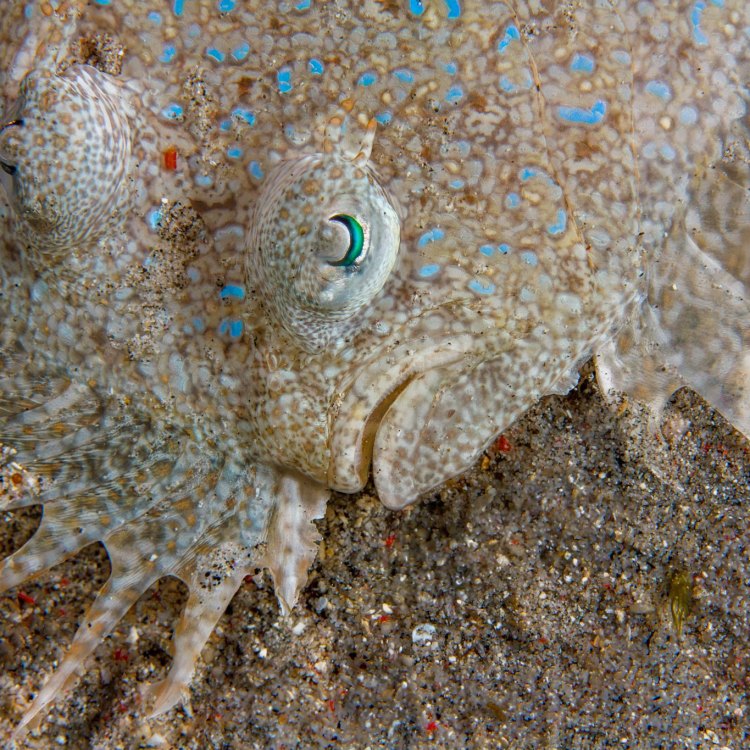
Flounder
- Adult Size: Varies depending on species
- Average Lifespan: Varies depending on species
- Reproduction: Sexual
- Reproductive Behavior: Varies depending on species
- Sound or Call: None
- Migration Pattern: Varies depending on species
- Social Groups: Solitary
- Behavior: Bottom-dwelling
- Threats: Habitat destruction, pollution, overfishing
- Conservation Status: Varies depending on species
- Impact on Ecosystem: Important prey species, helps maintain ecosystem balance
- Human Use: Commercial fishing, aquarium trade, food source
- Distinctive Features: Both eyes on one side of the head, camouflage
- Interesting Facts: Some species can change coloration to match their surroundings
- Predator: Varies depending on species
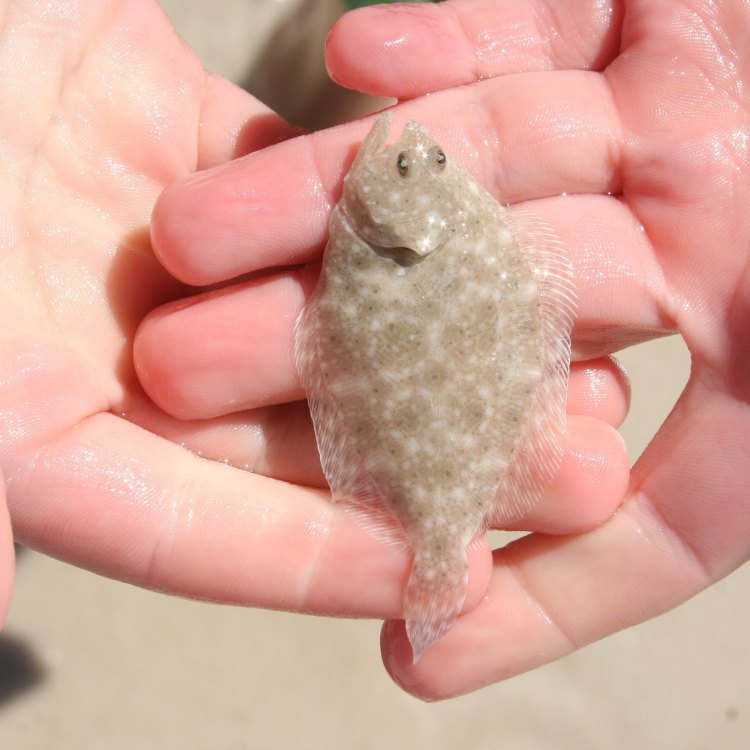
Paralichthyidae
The Fascinating World of Flounders: Features, Behavior, and Impact on Ecosystem
In the depths of the ocean, a unique and interesting creature can be found- the flounder. With its distinct features and intriguing behaviors, flounders have captured the attention of marine biologists and curious onlookers alike. Let's dive into the world of flounders and discover the wonders of this species.Flounders belong to the family of flatfish, which also includes plaice, halibut, and sole PeaceOfAnimals.Com. They can be found in coastal waters and prefer sandy or muddy bottoms. Their name comes from the Old English word "flounder," meaning to stagger, and this accurately depicts their swimming style. Flounders have a flattened appearance and can camouflage themselves with the seafloor, making them difficult to spot.
One of the most distinctive features of flounders is their unique eye placement. Unlike most fish, flounders have both eyes on one side of their head. They are born with eyes on both sides, like any other fish, but as they grow, one eye migrates to the other side. This adaptation allows them to lie flat on the seafloor and camouflage themselves, with both eyes always facing upwards. This gives the flounder an excellent view of potential prey above them, while also being able to hide from predators. Scientists believe that this adaptation is driven by natural selection as it gives them an evolutionary advantage Finnish Spitz.
The size of flounders varies depending on the species. The smallest species can grow up to just 2 inches, while the largest species, the Atlantic halibut, can reach up to 8 feet in length and weigh over 700 pounds. They have a long lifespan, with some species living up to 20 years in the wild.
When it comes to reproduction, flounders follow the sexual method. The male releases its sperm, and the female lays the eggs, which are then fertilized externally. The fertilized eggs are left to drift in the ocean until they hatch. The young flounders are born with eyes on both sides of their head, but as they mature, one of the eyes starts to migrate.
The reproductive behavior of flounders varies depending on the species. Some flounders, like European flounders, spawn inshore, while others, like Japanese flounders, spawn offshore. The timing of spawning also differs among species. Some spawn during the spring, while others spawn multiple times during the year.
Flounders are solitary creatures and do not form social groups. They are bottom-dwellers, and their behavior centers around their feeding habits. Flounders are ambush predators, and they usually lie still on the ocean floor, waiting for prey to pass by. Once the prey is within striking distance, the flounder will quickly swim towards it, engulfing it in its large mouth. They have sharp teeth that help them in capturing their food, which includes crustaceans, mollusks, and smaller fish.
Just like any other living creature, flounders also have predators. The most common predators of flounders are larger fish, sharks, and marine mammals. However, they have developed unique strategies to stay safe from these predators. Apart from their camouflage, flounders can also change coloration to match their surroundings, making them virtually invisible to predators.
Flounders face several threats in their natural habitat, mainly due to human activities. Habitat destruction is a prevalent threat, as more and more coastal areas are being developed for human use. Pollution is another major issue for flounders, as they are bottom-dwellers, and pollutants from industrial waste and agricultural runoff can accumulate on the seafloor. They are also impacted by overfishing, both intentionally and as bycatch. These threats have led to a decline in flounder populations in many regions.
Flounders are a vital part of the ocean ecosystem, and their decline could have severe consequences. They are an important prey species for larger fish and marine mammals, and their absence can cause a cascade effect, disrupting the balance of the ecosystem.
Humans also have a significant impact on the lives of flounders. They are commercially fished for their tasty and nutritious meat, mainly in Europe and Asia. Flounders are also popular in the aquarium trade, with some species being easier to keep in captivity than others. In some regions, they are also harvested as a food source, providing sustenance to coastal communities.
The conservation status of flounders varies among species. While some are classified as least concern, others are facing threats of extinction. The European flounder, for example, is listed as a critically endangered species, while the Southern flounder is classified as vulnerable. In regions where flounders are heavily fished, strict regulations and management plans are in place to protect their populations.
In conclusion, the world of flounders is a fascinating one. From their unique adaptations to their solitary nature and essential role in the ecosystem, flounders are a vital part of our oceans. It is crucial to understand and protect these creatures to ensure the health and balance of our marine environments. So next time you see a flounder swimming along the ocean floor, take a moment to appreciate its remarkable features and the critical role it plays.
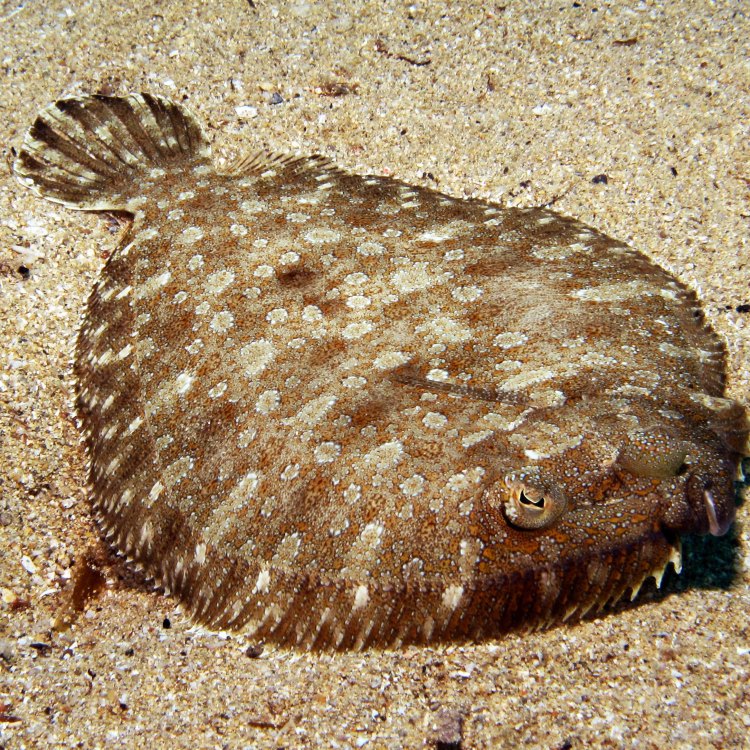
The Amazing World of Flounders: A Unique Look at the Flatfish Family
Disclaimer: The content provided is for informational purposes only. We cannot guarantee the accuracy of the information on this page 100%. All information provided here may change without prior notice.

